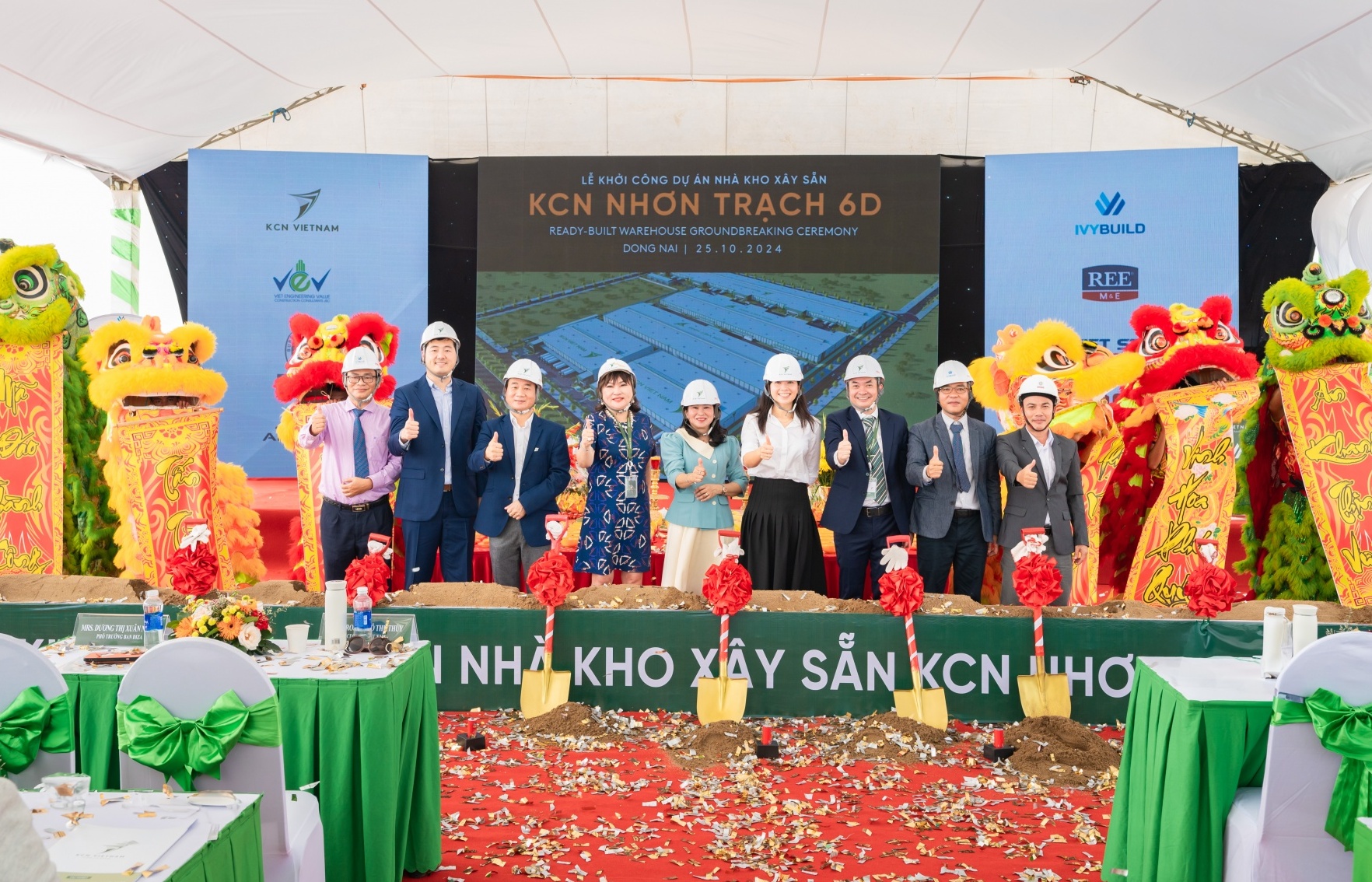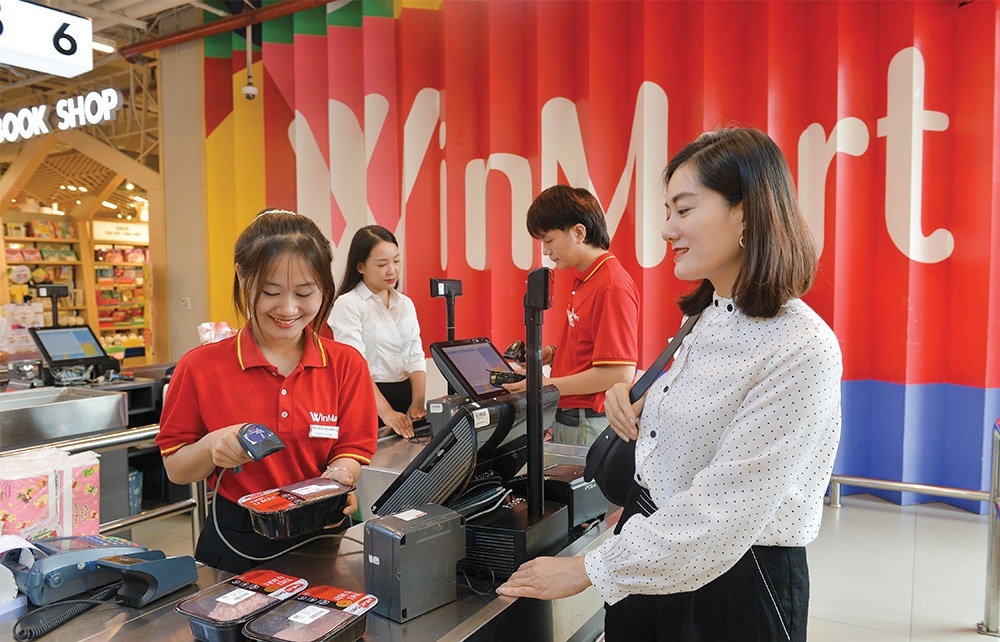Supply chain modernisation in Vietnam presents industry best practice for Southeast Asia
 |
| Callum Maxwell, senior consultant of TMX |
More foreign companies are investing in state-of-the-art technologies at their factories in Vietnam, making them some of the most advanced facilities in Asia. What do you think has triggered this smart manufacturing trend?
Even before COVID-19 hit, online consumption surged due to a rising middle class and increasing disposable incomes. Not only are more consumers purchasing online, they want goods faster and delivered right to their doorstep.
However, when lockdowns and movement restrictions were implemented, traditional retail consumption experienced a sudden halt and have forced shopping to become digital. In turn, businesses are forced to prioritise high-speed operations through automation, as it enables low-cost fulfilment of orders in a short time frame through increased operational efficiencies, higher storage density, and greater ability to deal with spikes in demand.
To remain competitive in the fast-changing e-commerce landscape, companies have turned to automation. This massive shift to e-commerce and the rush of organisations to reconfigure their supply chain and fulfilment strategies to keep up with the demand makes the move to automation even more pressing. With demand for logistics automation already strong prior to COVID-19, the upcoming demand surge further underscores the need for digitalisation and technology adoption.
Additionally, amid disruptions to manufacturing supplies globally, businesses have turned to sourcing diversification to mitigate supply challenges. Vietnam, in particular, has grown to become a location of choice for manufacturing outside of China, whether it is technology or textiles, which further drives the need for the adoption of smart manufacturing.
Warehouse development has been ramping up in Vietnam in recent years. What new technologies are being used in new warehouses to increase their capabilities?
Some of the latest technologies include autonomous mobile robotics (AMRs) and other similar mobile robotic solutions – even for older warehouses. AMRs are increasingly becoming the go-to automation solution for warehouses and distribution centres in Vietnam as AMRs can easily fit within smaller or existing warehouse space, are easily deployed, and are cost-effective.
Real-time analysis in warehouses is also increasingly being adopted. The advancement of the physical supply chain needs to synchronise with its digital counterpart to automate both tasks and complex decision making. This allows businesses to tap into interconnected systems that interact with one another and use the Internet of Things and big data to provide full visibility of operations, from planning to last-mile. Systems are able to make rapid data-backed decisions that enable operations to be flexible and responsive, which is particularly useful amid the ongoing disruption in global supply chains.
One such example is One Mount Group (1MG), which has adopted a “hybrid” operating model which allows for the use of a warehouse management system that can match their current and future needs. This enables 1MG to keep up with the increased volumes and its fast-paced growth, while allowing for expansion in the future to include future green-field distribution centres.
Transportation costs account for more than half of the logistics costs in Vietnam. How do you think technology-powered transport will help address the challenges?
By adopting big data to obtain full visibility of operations, businesses will be able to better plan delivery routes and allocations. Local Vietnamese system providers, such as Abivin, are already showing results.
The local transport management systems are allowing businesses to compile and manage orders and use transport data specific to the local geography. By leveraging open-source data for accurate and timely maintenance of server information, providers have developed accurate route optimisation tools, translating into 5-10 per cent cost savings for their partners. Such development of data analytics and cost-understanding means that transport providers are able to work creatively with their fleet to align with cost drivers.
 |
Incidents like COVID-19 and lockdowns highlighted the importance of sustainable supply chains, whether through reducing manpower or applying technology to increase efficiencies. Could you share about the importance of supply chain modernisation in Vietnam, especially during the pandemic?
With lockdowns and the resultant e-commerce boom, the increased growth of deliveries is driving up the use of last-mile delivery vehicles. The result is a rise in emissions from last-mile services. In Vietnam, the transport sector contributes around 10.8 per cent of the country’s CO2 emissions. This is projected to grow at 6-7 per cent annually, amounting to nearly 70 million tonnes of carbon dioxide or the equivalent of 16 coal-fired power plants in one year.
Along with the increasing consumer focus on environmental and social impact of the companies they buy from, it is becoming crucial for businesses to focus on operating sustainably. Supply chain strategies should enable businesses to exceed sustainability ambitions across logistics functions.
Adapting a sustainable culture within an organisation can help drive the transition to sustainable business. Organisations can make short-term decisions to improve their carbon output, including installing solar panels on warehouses, increasing vehicle utilisation, and reducing the use of single-use plastics, to help foster a culture of improvement across the organisation. Transition to high-performance vehicles, and implementing carbon monitoring systems are longer term initiatives that can improve sustainability performance.
What are the key driving forces to drive the development of Vietnam’s supply chain towards a modern and long-term successful model?
Businesses have had to evolve to keep up with social distancing and the resultant digital pivot. Furthermore, with supply chain disruptions becoming increasingly commonplace, a modern and sustainable model will help organisations become more resilient.
As people become more educated, we will see an increase in the labour force across the total supply chain. Increased education standards and the increasing appeal of the supply chain will see high calibre personnel in Vietnam entering into middle and upper management roles within organisations. These people will be able to guide and manage the traditional warehouse labour force, to innovate around processes, systems, skills, and people.
Furthermore, with the rapid advent of e-commerce and more consumers going online, demand continues to be at an all-time high, but the interest in e-commerce is driving the increase in skilled workforce. Companies can innovate to manage increasing volumes seen through e-commerce.
A modern and long-term successful supply chain model within Vietnam requires transparency and communication within participating organisations. For a business to be viable, they are required to understand their cost to serve and ensure they are performing for their clients at a level that does not see them operating below their costs. Ensuring the collaboration between parties can enable a mutually beneficial outcome.
What are your recommendations for companies to modernise their supply chains to keep up with key trends in the market?
Leading companies need to find ways to become more efficient and adapt to the new normal. First and foremost, it is key that businesses have a good strategy in place to ensure the right type of automation solution is implemented at the right cost. From there, they can look to incorporate sustainable practices in their facilities such as investing in solar panels and water recycling plants.
Beyond technology solutions, opportunity exists for businesses to develop strategic partnerships, particularly with third player logistics (3PL) providers. Partners should work towards modelling to understand one another’s businesses. With a focus on transparency, shared benefit, and collaboration, there is great potential to drive long-term mutual success.
Based on what we are seeing, we believe that Vietnam is entering a stage of transition where the transport infrastructure and businesses are starting to develop and enter into partnerships. Having the right network of partners will be key to navigating and achieving business growth.
What the stars mean:
★ Poor ★ ★ Promising ★★★ Good ★★★★ Very good ★★★★★ Exceptional
Related Contents
Latest News
More News
- M&A prospects bright in many sectors (November 21, 2024 | 11:54)
- M&As working in tandem with health development (November 21, 2024 | 11:29)
- Slow disbursement hinders ambitions (November 21, 2024 | 09:00)
- Mitsubishi Estate launches Logicross Hai Phong - a milestone in logistics evolution (November 20, 2024 | 14:32)
- Semiconductor workforce partnerships deliver industry-relevant training (November 20, 2024 | 10:58)
- German Quickpack to invest $31.7 million in Long An province (November 20, 2024 | 09:31)
- Foreign-invested enterprises drive logistics investment in the southeast region (November 20, 2024 | 09:27)
- Chile visit underscores trade benefits (November 19, 2024 | 10:00)
- Trump’s second term impacts sci-tech activities and industry 4.0 technologies (November 18, 2024 | 10:00)
- Vietnam eyes nuclear revival to bolster energy security (November 14, 2024 | 16:46)


 Tag:
Tag:

















 Mobile Version
Mobile Version